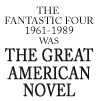







 |
 |
 |
 |
 |
 |
 |
 |


Let's extrapolate: what would happen if the Fantastic Four was a big story again? That is, if events once again had consequences?
Continuity becomes chaotic after issue 321. For most issues it almost looks like a different team. But what would happen if they remembered the past? If those events mattered? The trends are obvious. The answer is clear:
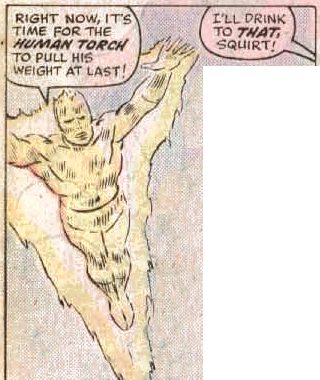
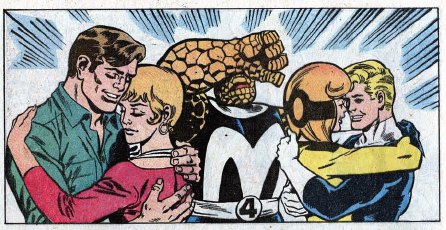
In FF332, Steve Englehart created a dream sequence that summarized all of his plans for the next year: what he would have done if continuity had not ended. He had been forced to return Reed and Sue, so did not confuse matters by making them leave again, but he confirmed that Ben and Alicia would end up together, leaving Johnny free to be with Crystal. This leaves everything ready for Stan Lee's "Last Fantastic Four Story."
Note that Englehart creates a new tragic figure in Sharon, the she-Thing. If readers want tragedy and depth, they got it. But without the need for a sliding timescale and endless reboots.
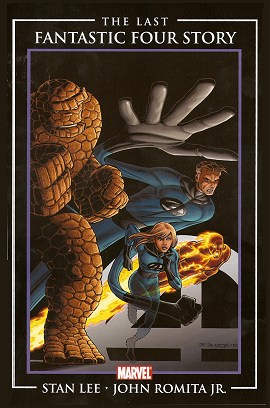
After Englehart's run there is only one story with any claim to
continuity: only one story that takes the themes from the first 27
years and moves them decisively forwards: The Last Fantastic Four
Story (TLFFS), written by the man who started it all - Stan Lee.
When TLFFS begins, the FF have received a request to help out at a top secret government high technology facility. No doubt the government would have specifically asked for Reed Richards and the original team in these circumstances: this also explains why it's the core team for this one mission.
Note that TLFFS does not actually mention Crystal - Stan Lee is always the perfect company man, and Marvel had at the time consigned that storyline to history. But it is easy to read between the lines. The last in-continuity reference showed Crystal on the moon (FF Annual 21) and the last in-continuity story had a similar moon image to the end of TLFFS.
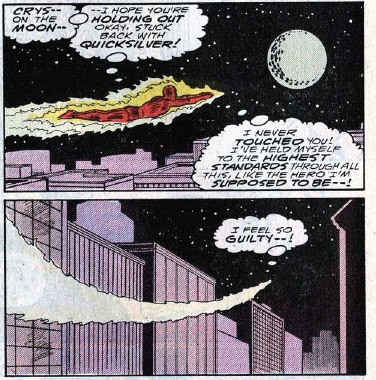
If the FF332 dream is canon (and it should be) then it resolves the situation, and Crystal probably went back to the moon for a few weeks to let Johnny and Alicia's divorce go through with the minimum of pain. Then TLFFS ends with the team heading for Crystal's home on the moon.
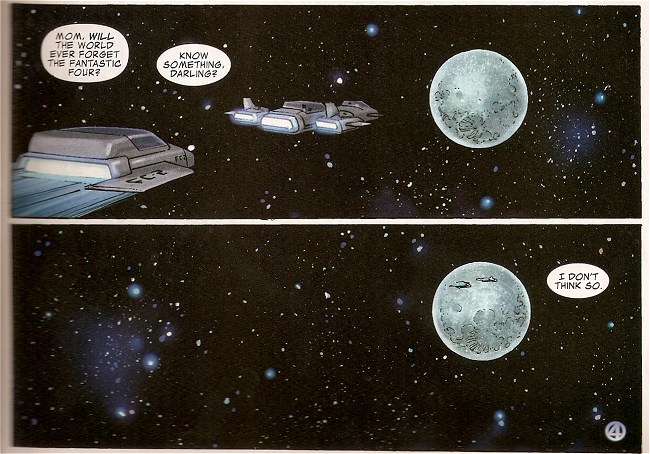
Criticisms:
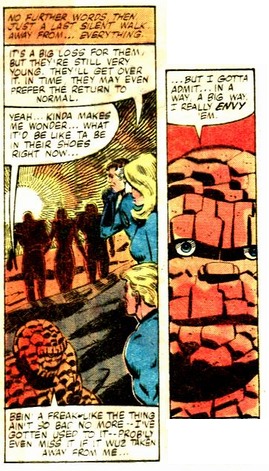
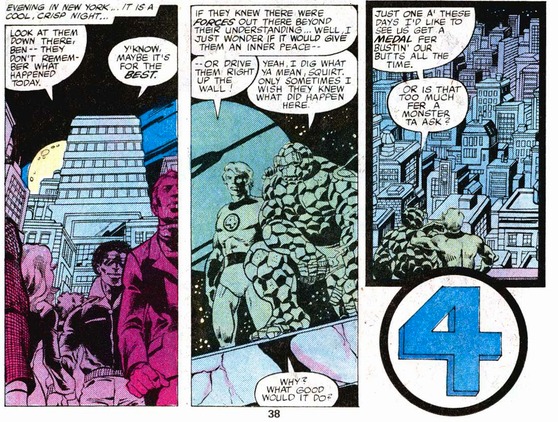
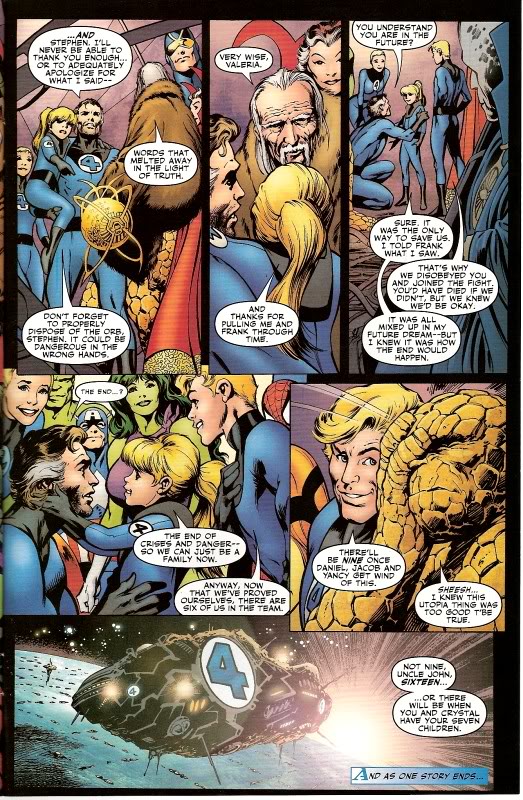
"FF: The End" is a highly praised title by Alan Davis. It shows
the only way the FF can possibly "end":
As David
Brothers observed: "Ben
Grimm retired to Mars [remember Reed on Mars in the 1998 annual?
-Chris] with Alicia Masters, his longtime girlfriend, and they
have a handful of kids. Ben can turn from monster to man and
back again, as well. Johnny Storm goes by John now, and heís a
big shot hero in his own right. Heís extremely well-respected,
to the point where heís the top dog in the Avengers. [...] Itís
been run into the ground, but the FF are a family, right? Whatís
the most important thing to a family? Each other. What is the
most important thing to parents? Their children. My expectations
were pretty much completely subverted. FF: The End isnít about a
space battle. Itís about Susan Richards having the drive to get
her children back, with a time travel twist. Itís about Reed
being forced to look beyond his logic and science and trust his
wife. Itís about Ben and John reconciling with each other and
their team."
Eventually there will be sixteen members of the team, including
Ben's children and the seven children that Johnny and Crystal will
have.
How far in the future?
Davis places the story in the distant future, but that is a minor
detail and easily explained (if needed) by the FF's time machine.
Davis also hints at Galactus' relationship with the team, a topic
discussed elsewhere on this site and confirmed by the climax to
Hickman's run (Galactus serves Franklin). Finally, Davis also
shows that the concern that real time means old heroes is
nonsense: he dismisses that by just mentioning that Reed has found
a way to slow aging, and he shows that a semi-retired Reed and Sue
would still be around, they would just put their family first.
Sue and Reed can never fully
leave: they are family.
Reed and Sue can never fully retire: too many dangers arise. but they have to get out of the way in day to day matters so the younger generation can thrive. That is how families work. Without that move they are just playing at families, they are not a real family. Real families constantly grow, age, expand, move up the ladder of time.
Retiring was a big mistake
When Reed and Sue "retired" in 1988 they were shown living in a small house. This was not shown by Englehart, but was in an pin-up picture and in a backup story in another comic. This was a fatal flaw, and showed no understanding of the characters. It is true that Reed and Sue chose a small house when they tried to leave in Byrne's run, but that was when they were afraid and desperate, and it had catastrophic results.
Where would Reed and Sue retire to?
The comics clearly imply what kind of house they would "retire"
to. The team live the American Dream, and so their house would
reflect that. Issue 134 shows where Sue goes when she wants to get
away: her friend's ranch, where she can ride horses. Reed,
meanwhile, cannot be happy unless he can tinker. A massive
laboratory complex would ruin any ranch, so would naturally be
built underground. Again this is foreshadowed in the same issue,
134, where we see a darker version of Reed: a high tech genius who
neglects his son and lives under the surface.
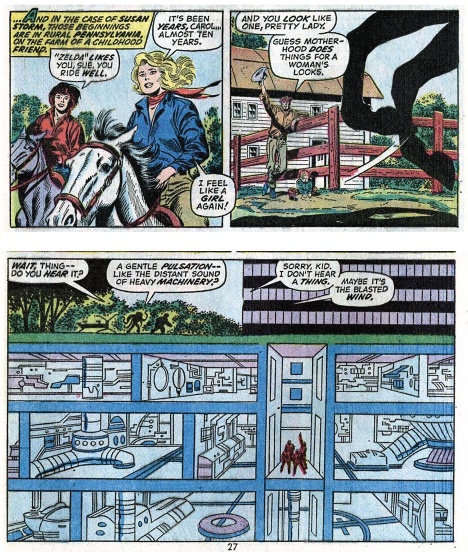
Why underground?
Only by combining the idyllic ranch and underground labs can Reed and
Sue both be happy. Perhaps we could argue that Reed could instead
use a "bigger
inside than outside" type lab (as in Simonson's run), but that is a
technical solution that's vulnerable
to damage. A physical series of hidden caverns is more robust. It is
also reassuring to Sue: her husband would tend to be physically nearby
rather than on another planet or other dimension
There is good reason for advanced races to move underground: it
protects your privacy and also protects
you from attack: you can see an armada or asteroid coming, but
danger from radiation comes too quickly to see: a natural gamma burst
from a nearby dying star will wipe out everything on the surface of a
planet, possibly without warning without s that periodically kill
everything on the
surface. The Deviants created their machines underground for good
reasons.
Psychological symbolism
Going underground symbolizes the mother earth, stability, the inner
self: it's where you find yourself. For more about this, see the notes
to issue 1, especially regarding Ben's skin and the symbolism of space
versus the ground under our feet.
Story symbolism
The big 28 year Fantastic Four story was largely about him becoming
grounded: realizing that everything he needs is right here, with Sue and
Franklin. So it is highly symbolic if he moves his focus from outer
space to the round under his feet. Going underground it is also the
intelligent way: for all Reed's intelligence he could be extremely
dim. He spent all his time looking into empty space for aliens,
and trying to perfect a subspace portal on his own. yet if issue 1
taught him anything it should have been that aliens are already watching
us: the powers were no accident (see the notes to issue 1 and 319, and the page on the cosmic).
Reed was wasting his time. He saw in issue 1 that advanced technology
was right under his feet! And in act 5 he learned that this technology
included (unsurprisingly in hindsight) working teleportation devices.
Reed could have saved himself years of grief if he had listened to the
Mole Man in the first place, become his friend, and uses his technology.
All the benign advanced races you could want are already here and ready
to talk, and Reed never even bothered to listen. Now, after act 5, he
can learn from his mistakes and become part of the advanced universe.
For all these years Reed tried to reinvent the wheel when he had whole races of advanced beings willing to help him if he only became their friend (Inhumans, underground cities, etc.). He had functioning star gates under his feet and never even looked!
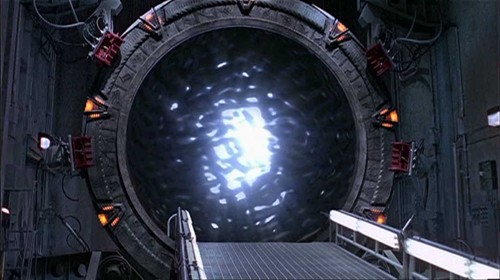
(A "stargate" from the TV series of the same name)
In the next generation Reed can begin using those star gates in earnest, and when he finds somebody, let Sue do the talking!
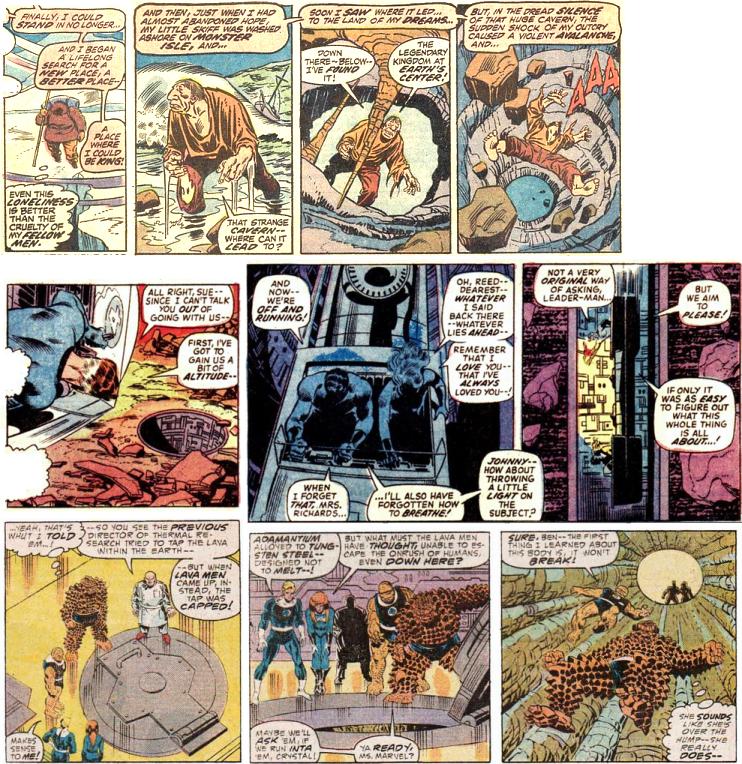
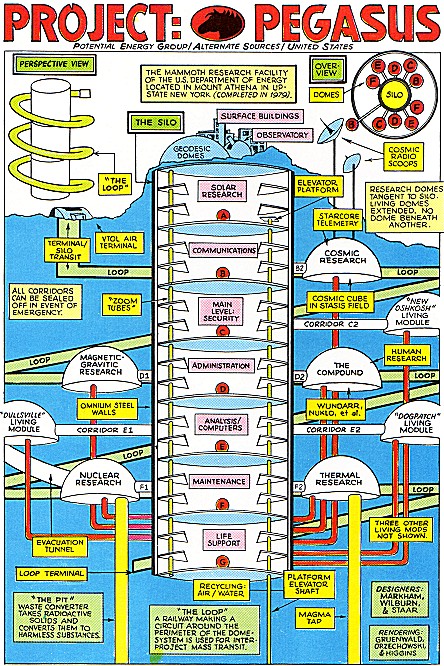
The idea of a super genius with a high tech cave might sound familiar...
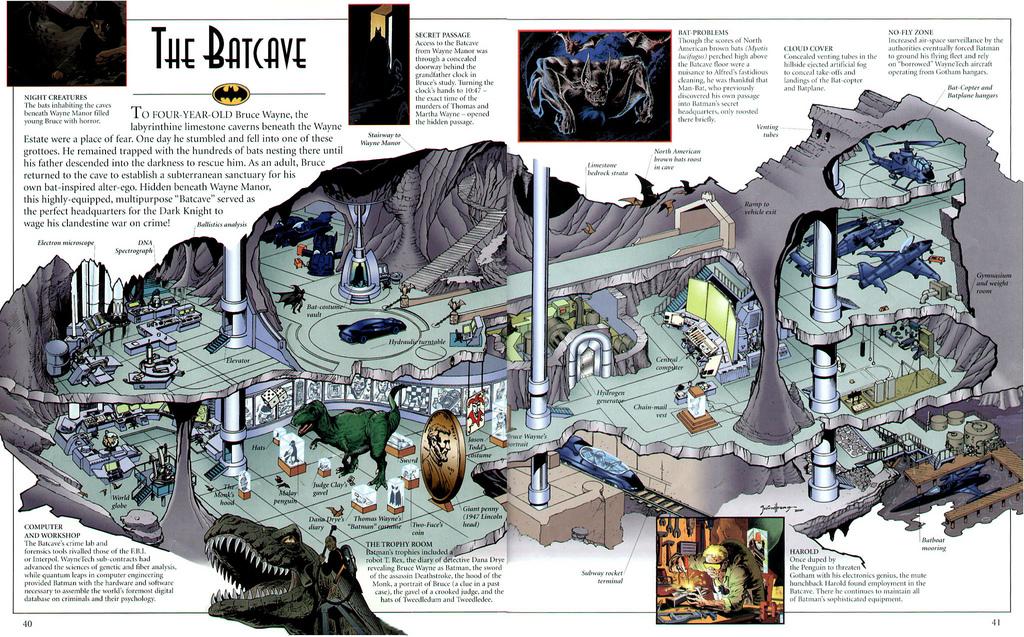
A lot of comic book writers find it hard to make Reed Richards interesting. It may be because they have forgotten that Reed is basically Batman.
| Mr Fantastic |
Batman |
| Son of a billionaire |
Son of a billionaire |
| extremely intelligent |
extremely intelligent |
| wealthy capitalist |
wealthy capitalist |
| heavy use of technology more than super powers |
heavy use of technology, not super powers |
| superb physical specimen |
superb physical specimen |
| Obsessively driven, due to
childhood experience (his mother died when he was seven, and his father
was science mad and left to become a warlord) |
Traumatized by early loss of parents (Parents shot in front of him when he was 8) |
| Butler became surrogate father (Peacock, FF272) |
Butler became surrogate father, Alfred Pennyworth |
| needs to always be in control |
needs to always be in control |
| skilled at martial arts (see FF17) |
skilled at martial arts |
| obsessive bordering on mental illness |
obsessive bordering on mental illness |
| has trophy room (FF268) |
has trophy room |
| mind can get very dark (see notes to FF250 for example) |
mind can get very dark |
| classic enemies rely on illusion (e.g. Miracle Man, Invincible Man, Maximus, even Doom and the Mole Man at times) |
classic enemies rely on illusion |
| principle enemy once classified insane (Doom, FF200) |
principle enemy generally insane (Joker) |
| originally darker, treated as light and silly on TV in the 60s |
originally darker, treated as light and silly on TV in the 60s |
If Reed and Sue settle at Project Pegasus, and Ben settles with
Alicia while Johnny head a new team, does this mean splitting up the
team? Not really. Wherever Crystal is, Lockjaw will not be far behind,
so any of the
extended family is only a heartbeat away.
In particular, Franklin
will want to grow up with other children, and will want to have
fun with his uncle Johnny. Probably every second issue would
involve Reed and Sue in some way, in the same way that a wild
20-something who loves his parents will keep turning up at their
house when he needs something. But he does not want them living at his house telling
him what to do.
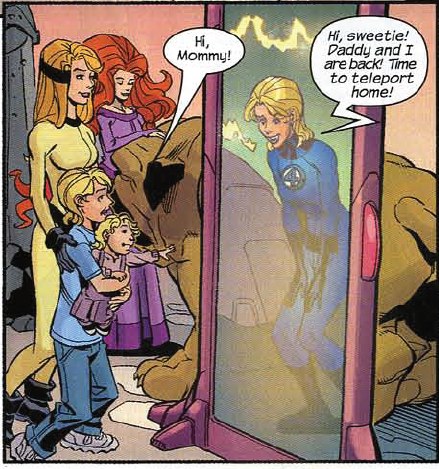
As we saw in Waid's run, giant Skype things mean the family will always be close. They can still have breakfast together, even if living in separate houses. They just need to be far enough away to let Johnny and Ben be in charge, to be themselves.
Note also that Franklin routinely stays with Crystal: The team
made of Johnny, Crystal, Franklin and Luna already exists,
waiting.
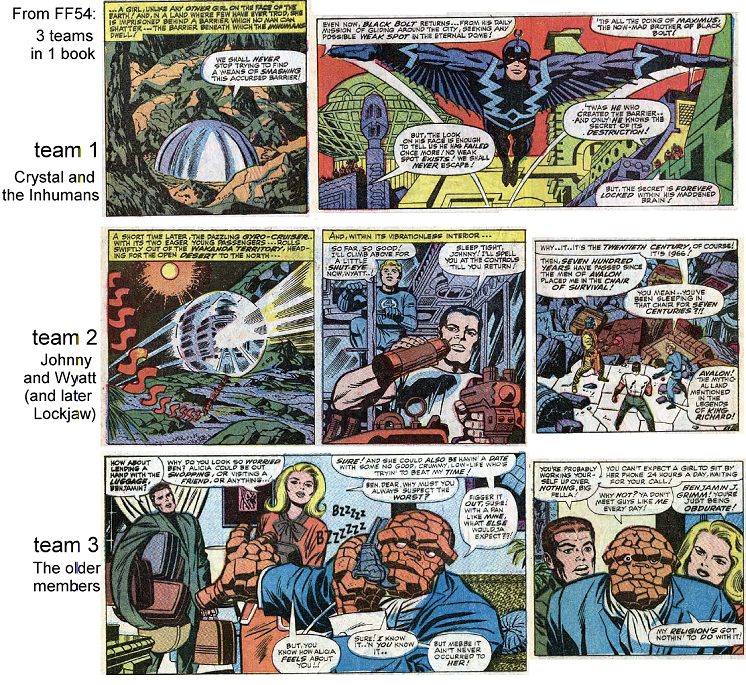
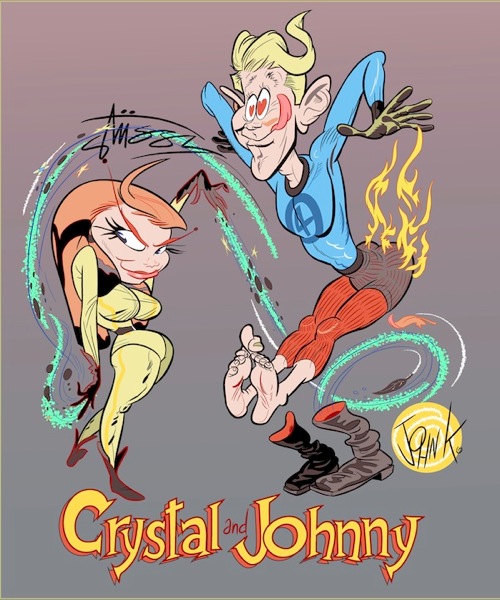
The Fantastic Four represent the four elements: earth (Ben), Air
(Sue), Fire (Johnny) and water (Reed). Crystal represents all
four. She shows up when everything is in harmony.
Act 3, the happiest and most exciting period in the history of the FF, was when Crystal was around: it began when Johnny saw Crystal for the first time, and ended when Crystal left. New readers may not realize the importance of Crystal: all they have seen is the fourth act with all its problems, and the Franklinverse with its lack of direction. But this is not the natural state of the Fantastic Four: their natural state, as we saw in Act 3, is fun and excitement! At its heart was the romance between Crystal and Johnny, two of literature's greatest lovers.
Crystal's importance cannot be
overstated. If you had to choose a title to represent the Marvel
Universe at its greatest, you have to choose the Fantastic Four
(for the origin, Galactus, This Man This Monster, The Power and
The Pride, etc). And if you have to choose two people who
represent the Fantastic Four, the two who actually want to be
members, it's not Reed and Sue, it's Crystal and Johnny! Put
simply, Crystal and Johnny represent the core of Marvel.
John Kricfalusi (creator of Ren & Stimpy) understands: "A
couple years ago Stussy put out a bunch of shirts featuring Marvel
superheroes. Stussy's art director Adam Jay Weissman cooked up the
idea and asked some non-Marvel artists to do their interpretations
of their favorite characters. I picked Crystal and Johnny Storm."
- John
Kricfalusi
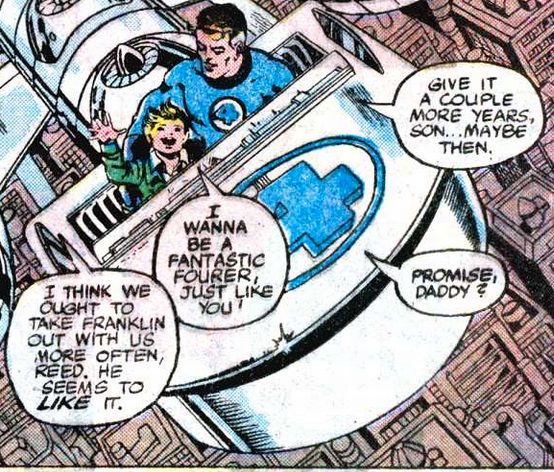
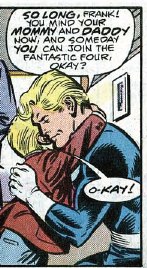
He may be young, but he's the most powerful member, and can defend himself even when unconscious. He has already saved the team plenty of times, so they need him!
The Franklinverse is a result of Franklin's
insecurities, and hence his fear of growing up. Now that
Reed and Sue put him first, he can finally grow up.
Franklin should have been Harry Potter
Superhero kids are seldom well written. They could be. There are plenty of real novels about kids that are fun and interesting to read. Take Harry Potter for example.
Franklin was the prototype Harry Potter: a kid neglected by his
parents, with amazing powers, fated to save the universe. Chris
Claremont understood this. In the 1991 "Days of Future Present" stories
Claremont revealed him to be starting at his Hogwarts, Xavier's school.
This was six years before Harry Potter was published. We could have seen
Franklin grow up, he could have been fleshed out as a three dimensional
character with his own ideas, mysteries
and frustrations. We should have seen the limits to his powers (see
"objections" below), in order to create real tension. We should have sen
his own version of Hagrid, Ron, Hermione, etc. Readers would have
cared. But instead he was treated as a one dimensional problem
character, the same as always. Marvel dropped the ball.
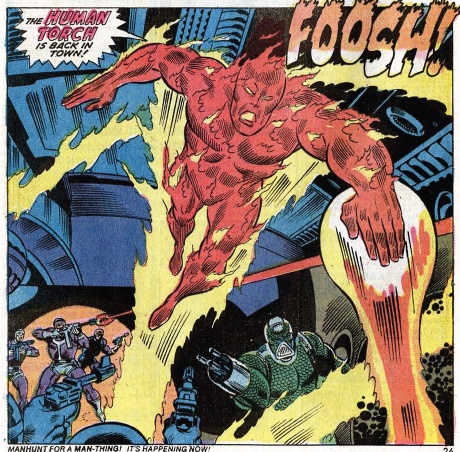
Notice something? It's a family of four superheroes with a familiar dynamic:
Yes, that's right. It's the same dynamic as the original
Fantastic Four, but more wild! Reed and Sue are naturally
cautious, and always have the sensible ideas, but Johnny always
solved his problems by thinking on his feet: The future will be a
lot more exciting than the past.
Note that the new Fantastic Four represents the new zeitgeist of America:
They will basically be the craziest, most chaotic family ever. The only rule will be that any artist who draws the new FF standing still for more than one frame will be instantly fired. That's the fun stuff, but a good drama need serious conflicts as well. These come from the following conflicts:
Franklin was born in 1968, and realism demands that we admit it. So much of the early Fantastic Four is tied to the 1960s and does not work outside of that context. So how do we explain that Franklin is not in his mid 40s?
The solution is simple: realism demands that the characters admit the obvious: they know about the Franklinverse. Between 1968 and 2012, time stretched and weird stuff happened (like routine resurrections). It's no secret. So they refer to biological and calendar years separately. This is just like an adopted child referring to biological and adopted parents.
A 1960s link is not a problem: in the Internet age, readers are
used to finding stuff from before they were born.
Franklin may appear to be all-powerful, which removes any danger
or excitement from stories. But let's clarify exactly what he can
do, and see how those powers are all variations of the same
thing.:
1. Dream-self and psi-powers:
Keep these as they are. Tattletale and Psi-Lord were not overly
powerful. They just skirt around alternate realities without
diving into them: the dream self stays in this reality, and
psionic powers merely extract alternate scenarios in the mind
without going there,
2. He creates brain blasts
(Annihilus, Ultron, etc.):
These are just uncontrolled full strength psi-powers. Most bad
guys will learn about this and find some protection. Also, these
can lead to unexpected death. Let's say for example that Franklin
brain blasted Namor in one of the FF's battles: an ally would be
murdered, leading to global war.
3. He is a living conduit to the
Negative Zone (FF Annual 1998):
The next stage in exploring alternate realities is to open a
conduit via the nexus of realities, then choose one at random from
the infinite possibilities. The Negative Zone is accessed from
such a conduit, as explained when it was first introduced, so the
neg zone can be consciously opened whereas a pocket universe
cannot (see next point)l. Opening the Negative Zone is highly
dangerous and of limited use.
4. He creates pocket universes.
Since all possible universes exist in the omniverse, creating an
alternate universe simply means choosing one and linking to it.
Once an alternate reality is chosen it cannot be controlled. Any
apparent control is in stories told in the Franklinverse era (e.g.
versus Abraxas) and could themselves be illusions. The only time a
pocket universe was useful (in "Heroes Reborn" where it saved some
lives) was when a Celestial was involved. Other realities (e.g.
the Franklinverse) can at best simply slow down time, and usually
result in characters forgetting their past and changing their
personalities. This is a "last resort" power than can do more harm
than good. Not useful in most cases.
5. He is the anti-Mephisto
(Mephisto fears him)
Mephisto's power is to create a dream-like realm where normal
rules do not apply, and people there are often in pain. In other
words it's kind of like what Franklin does, but Franklin does not
want to deliberately cause pain. Franklin can close off such
worlds, so he can easily neutralize Mephisto. Mephisto will
therefore try to prevent Franklin from entering his realm, or if
he enters, keep him asleep (FF 277).
In short, Franklin is not a deus ex machina.
The story can work.
Dear Marvel, |
